Enhancing Soft Skills for DevOps Engineers: Essential Non-Technical Skills to Thrive
Growing Learning and Adapting to Change
Rituals for Growth and Learning
Welcome to the ultimate guide on establishing repeatable habits for continuous learning in DevOps. I’m Michael Forrester, and in this article we’ll walk through proven rituals—our foundation for upskilling, career advancement, and staying ahead in a fast-moving industry. Whether you’re an architect, operations lead, developer, or DevOps engineer, these steps will help you build a sustainable learning practice.
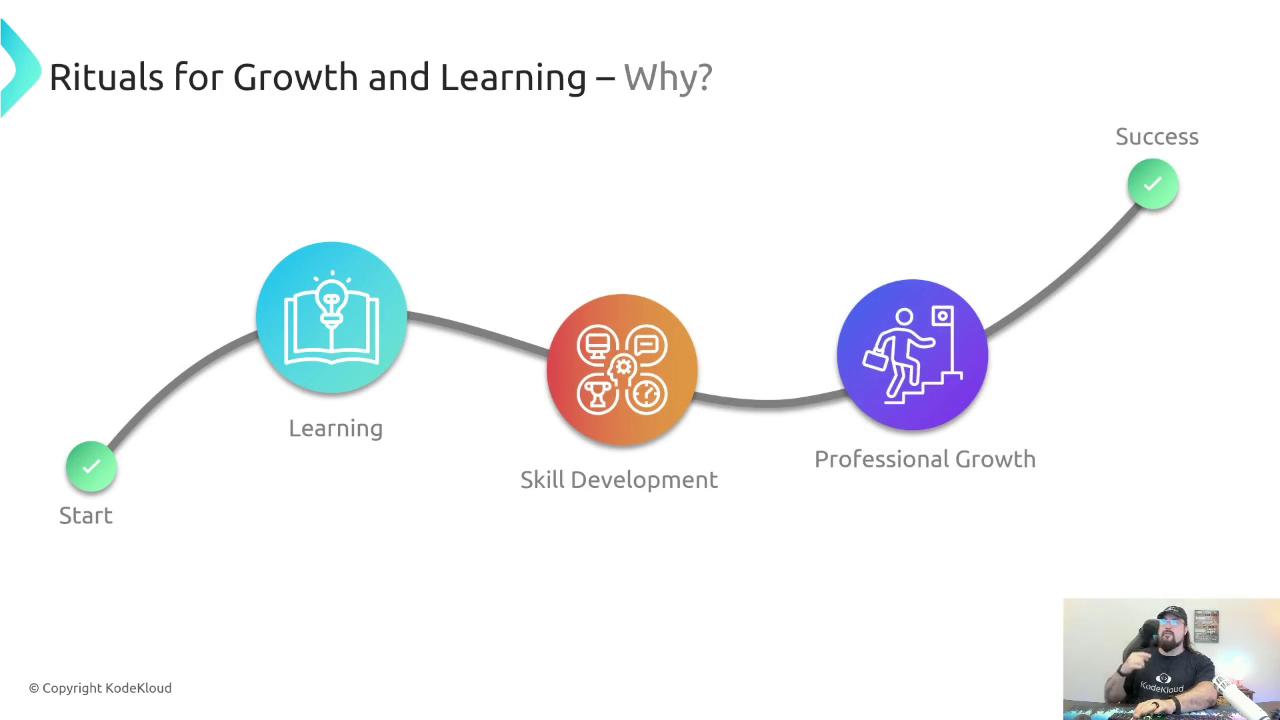
Why Rituals Matter
Rituals are repeatable commitments—daily or weekly actions—that turn sporadic study into long-term progress. By embedding small learning tasks into your routine, you maintain momentum and develop a growth mindset that keeps you aligned with the latest tools, methodologies, and best practices in DevOps.
Identifying Learning Opportunities
Every project, incident, or feature request is a chance to learn. To pinpoint high-impact opportunities:
- Explore your passions and align them with emerging trends.
- Monitor industry updates on cloud, CI/CD, and platform engineering.
- Request peer feedback on workflows, tooling, or automation gaps.
- Reflect on failures to uncover improvements in monitoring or processes.
When your learning goals dovetail with real work scenarios, you’ll find motivation and relevance in every task.
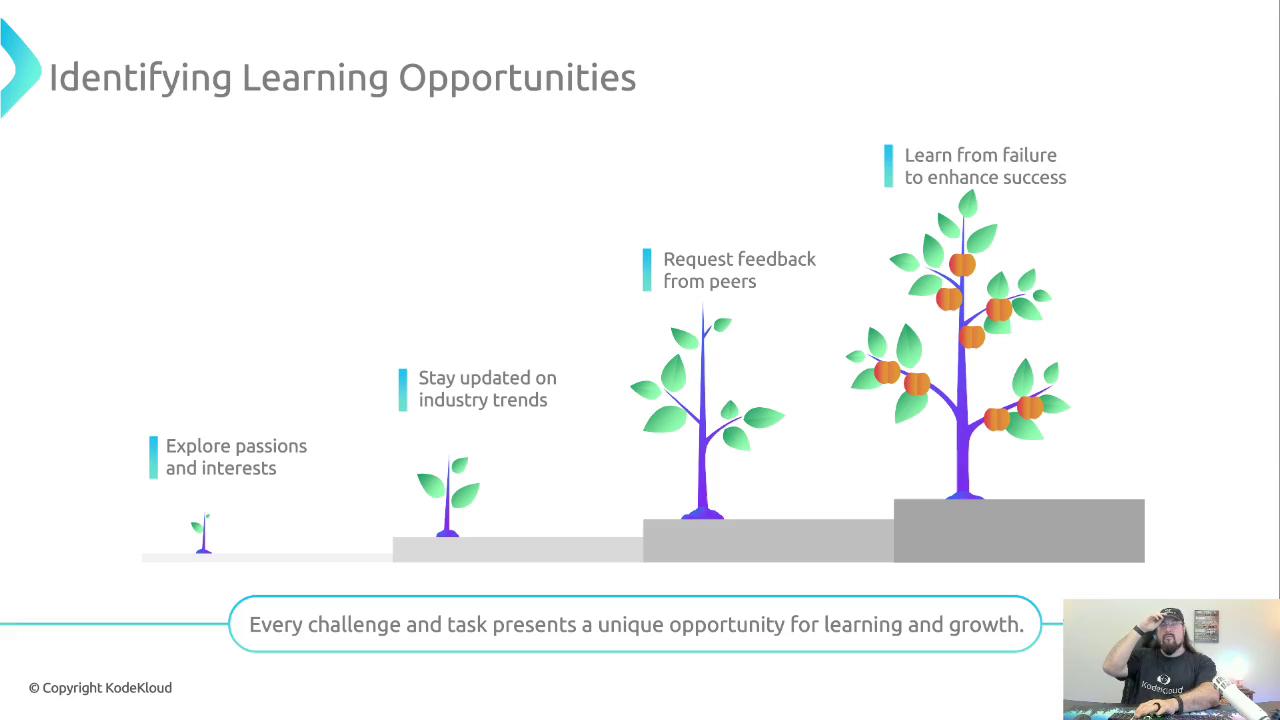
Setting SMART Goals
SMART goals—Specific, Measurable, Achievable, Relevant, Time-bound—focus your efforts on skills that drive your career forward. Examples include:
Achieve a Certified Kubernetes Administrator (CKA) in 12 weeks.
Automate deployment pipelines for three microservices by Q3.
Complete a cloud-platform certification in six months.
Choose goals that excite you and align with your day-to-day responsibilities.
Use milestones like certifications or project deliverables to measure progress.
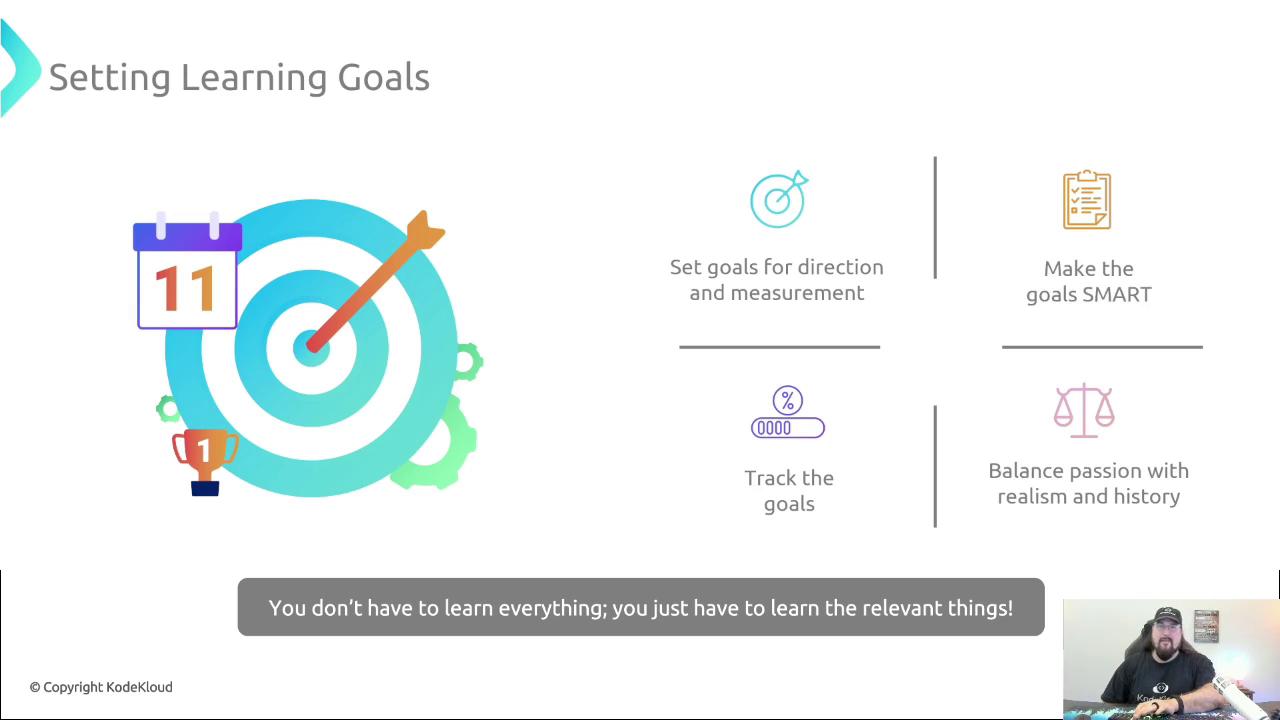
Note
Break large objectives into weekly or daily tasks. Focus on one cloud concept or automation script per session.
Tracking Progress
Quantify your study hours and checkpoints. For a 40-hour certification:
| Week | Hours Completed | Remaining |
|---|---|---|
| 1 | 5 | 35 |
| 2 | 10 | 30 |
| … | … | … |
Logging time and accomplishments keeps you accountable and highlights when to adjust your pace.
Creating a Learning Routine
Consistency beats intensity. Schedule short, focused sessions:
- 15 minutes daily before work
- 30–60 minutes on select weekdays
- Post-standup or after-dinner time slots
Warning
Avoid marathon “cram” weekends—they lead to burnout. Think of learning as a steady marathon, not a sprint.
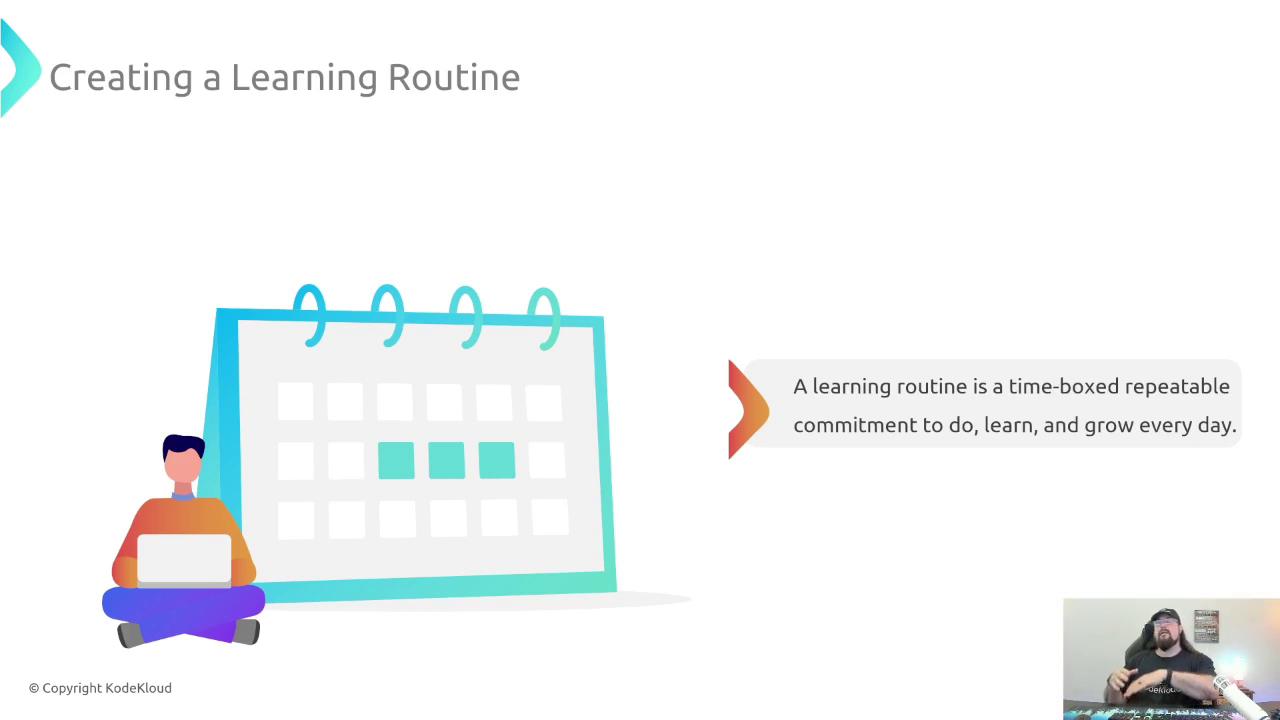
Leveraging Resources and Tools
Just like DevOps relies on people, processes, and technology, effective learning combines multiple formats and platforms:
| Category | Tools & Examples |
|---|---|
| Learning Resources | Video platforms, books, vendor tutorials, webinars |
| Digital Tools | Notion, personal wikis, Evernote |
| Community & Networking | Forums, study groups, mentorship, Slack channels |
| Sandboxes & Labs | VMs, Kubernetes clusters, cloud labs, serverless demos |
Engage with blogs, TED Talks, podcasts, and hands-on tutorials to reinforce new concepts.
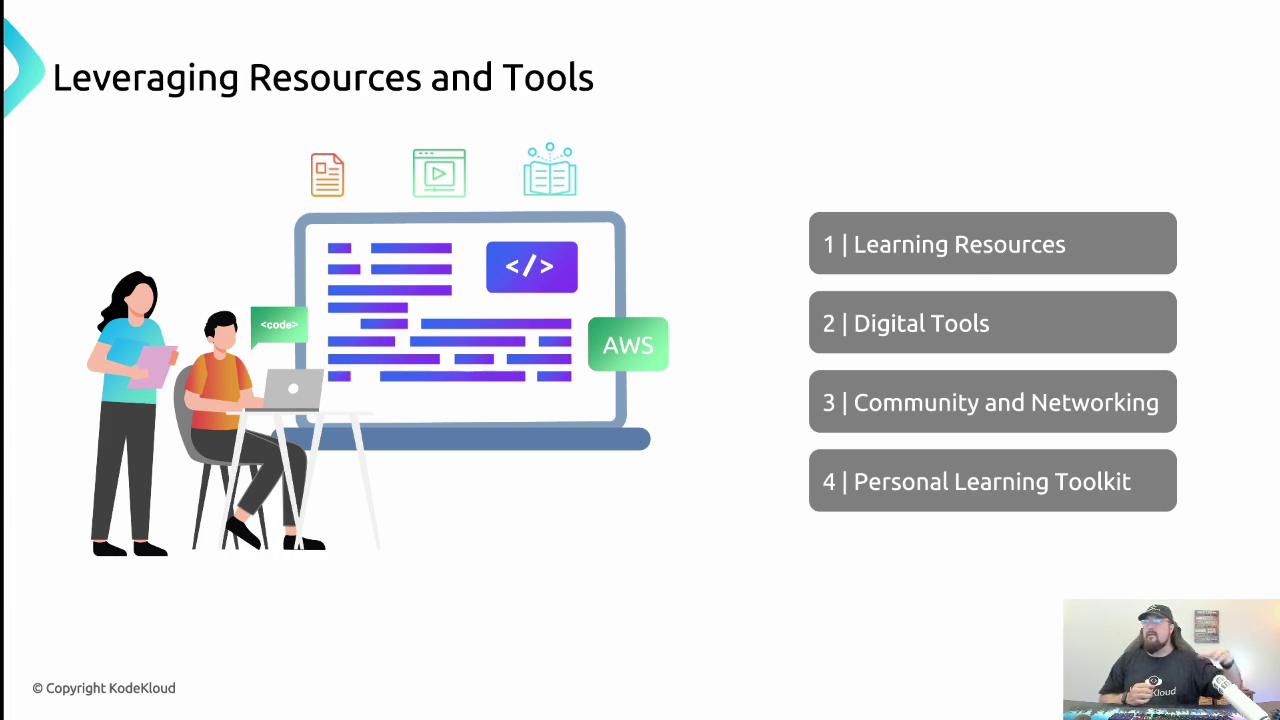
Applying Learning and Practice
The true power of knowledge is unlocked through application:
- Learn a concept or tool.
- Experiment in a sandbox environment.
- Integrate it into a live project or workflow.
- Reflect, gather feedback, and refine your approach.
Cycle through this loop to deepen your expertise and adapt to real-world scenarios.
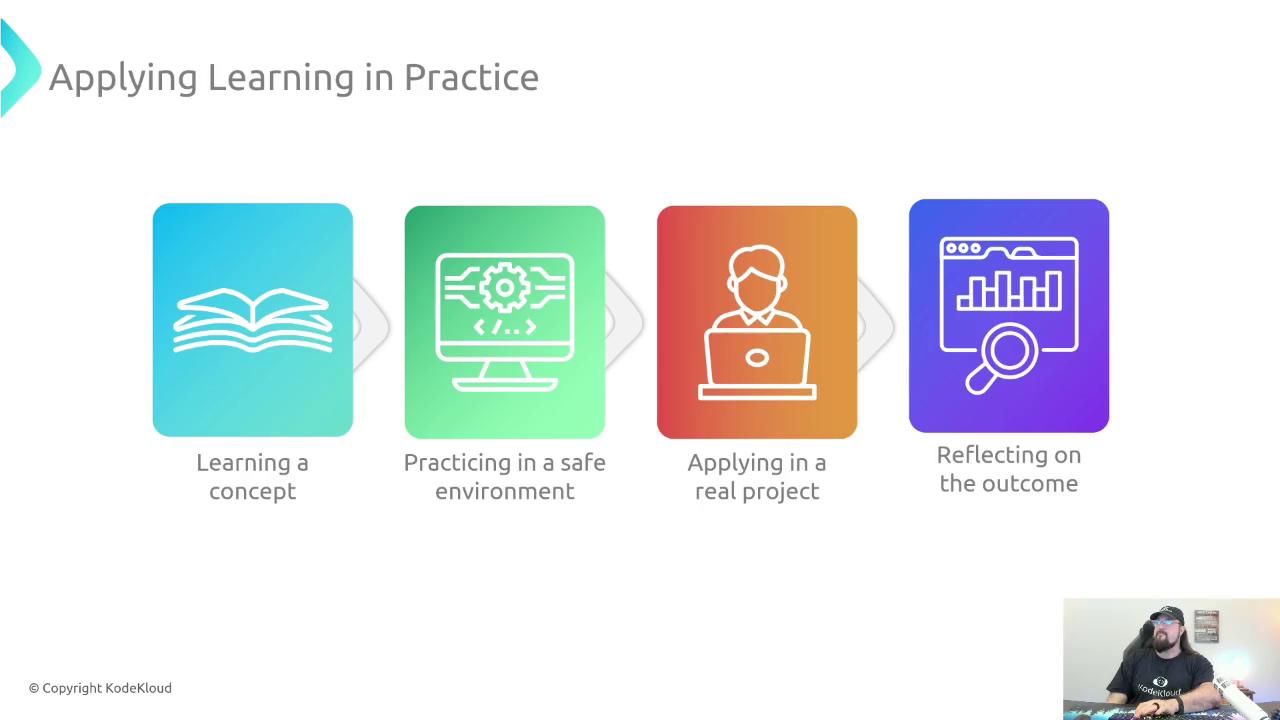
Conclusion
By embedding SMART goals, tracking your milestones, timeboxing study sessions, leveraging diverse resources, and applying new skills in practice, you’ll cultivate a sustainable learning ritual. Align each step with your current role, organizational needs, and long-term ambitions. Remember: continuous learning is a marathon. Commit to small, daily wins, and you’ll thrive in DevOps and beyond.
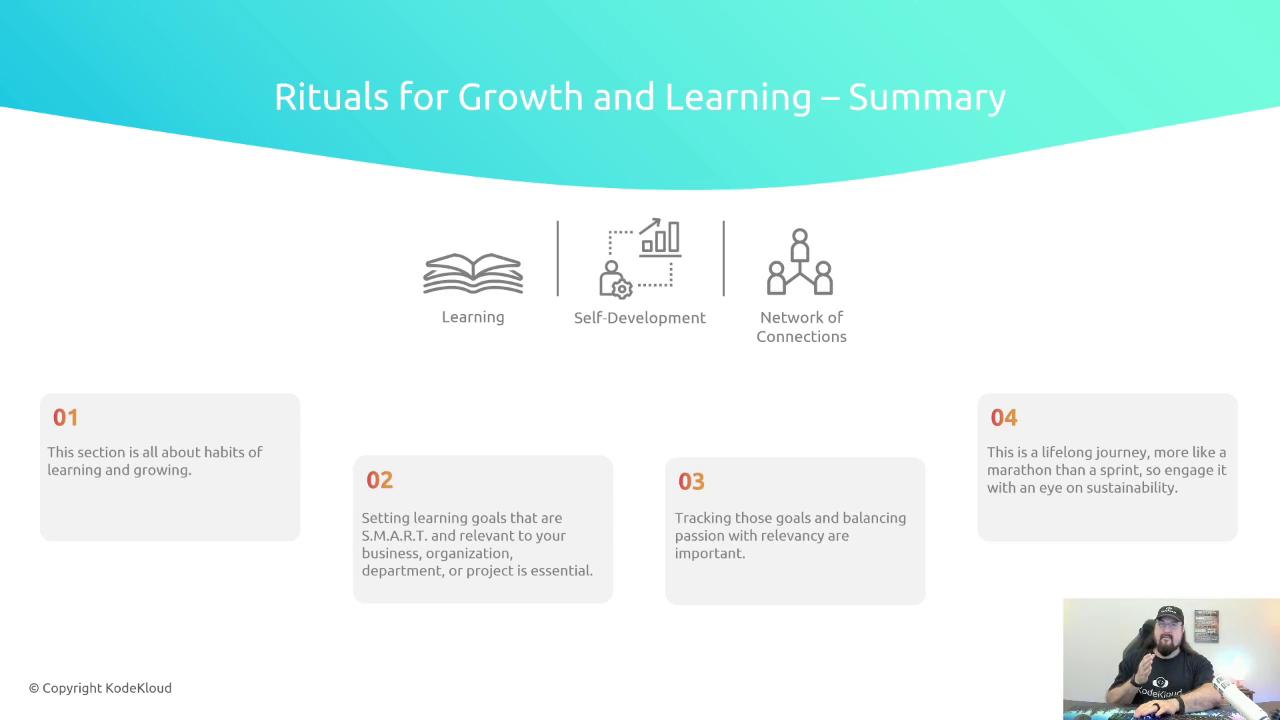
Feel free to connect on the forums or reach out via email at [email protected]. Happy learning!
Links and References
Watch Video
Watch video content